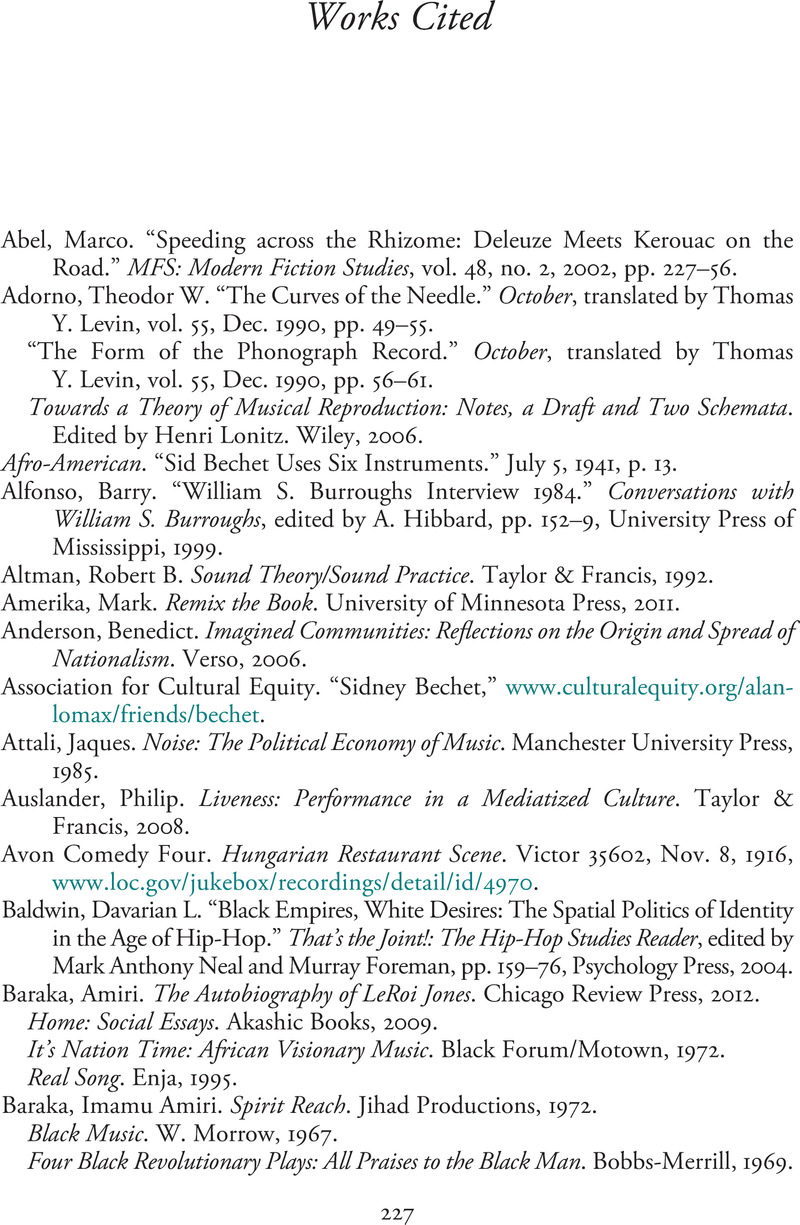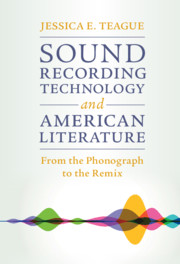Book contents
- Sound Recording Technology and American Literature
- Cambridge studies in American Literature and Culture
- Sound Recording Technology and American Literature
- Copyright page
- Dedication
- Contents
- Figures
- Acknowledgments
- Introduction Resonant Reading
- Chapter 1 Ears Taut to Hear
- Chapter 2 Ethnographic Transcription and the Jazz Auto/Biography
- Chapter 3 Press Play
- Chapter 4 The Stereophonic Poetics ofLangston Hughes and Amiri Baraka
- Chapter 5 From Cut-up to Mashup
- A Post-Electric Postscript Recording and Remix Onstage
- Notes
- Works Cited
- Index
- Recent Books In This Series (continued from page ii)
- References
Works Cited
Published online by Cambridge University Press: 07 May 2021
- Sound Recording Technology and American Literature
- Cambridge studies in American Literature and Culture
- Sound Recording Technology and American Literature
- Copyright page
- Dedication
- Contents
- Figures
- Acknowledgments
- Introduction Resonant Reading
- Chapter 1 Ears Taut to Hear
- Chapter 2 Ethnographic Transcription and the Jazz Auto/Biography
- Chapter 3 Press Play
- Chapter 4 The Stereophonic Poetics ofLangston Hughes and Amiri Baraka
- Chapter 5 From Cut-up to Mashup
- A Post-Electric Postscript Recording and Remix Onstage
- Notes
- Works Cited
- Index
- Recent Books In This Series (continued from page ii)
- References
Summary

- Type
- Chapter
- Information
- Sound Recording Technology and American LiteratureFrom the Phonograph to the Remix, pp. 227 - 243Publisher: Cambridge University PressPrint publication year: 2021

